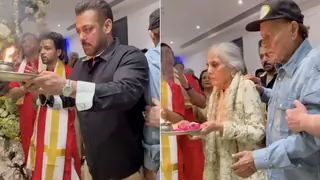Language : Urdu, Punjabi
Phone Code : 0573
Introduction

Chakwal was created as an independent district of Rawalpindi division in 1985 by combining subdivision Chakwal of district Jhelum, sub-division Talagang of district Attock and police station Choa Saidan Shah, carved out of subdivision Pind Dadan Khan, district Jhelum, and amalgamating it with sub-division Chakwal. Choa Saidan Shah was upgraded to the level of a sub-division in 1993. District Chakwal is bordered by the districts of Rawalpindi and Attock in the north, district Jhelum in the east, district Khushab in the south and district Mianwali in the west. The total area of district Chakwal is 6609 square kilometers, which is equivalent to 1652443 acres, and as enumerated in the 1998 census the total population is 1059451, 87.7%% of which lives in rural areas and 12.3% in the urban areas, making Chakwal a predominantly rural district pivoted on an agrarian economy with a very small industrial sector. Lying at the beginning of the Potohar plateau and the Salt Range, Chakwal is a barani district and the terrain is mainly hilly, covered with scrub forest in the southwest, and levelled plains interspaced with dry rocky patches in the north and northeast. The tribes clans and castes that inhabit this area are the Awans, Rajputs, Mehr Minhases, Kahuts, Mughals, Gujars, Gondals, Syeds, Arains and the Sheikhs. The physical features of the district, its tribes, its society and its economy all combine to make Chakwal one of the main recruiting areas for the Army and the Air Force. Other main occupations of the people are agriculture and mining. Transport and poultry business is also important. At present district Chakwal consists of 3 subdivisions - Chakwal, Talagang and Choa Saidan Shah; 1 sub-tehsil- Kallar Kahar, 23 qanungois and 198 patwar circles. The police subdivisions correspond with those of the district administration and there are 11 police stations- Chakwal City, Saddar, Kallar Kahar, Dhumman, Nila, Dhudhial, Talagang City, Saddar, Tamman, Lawa and Choa Saidan Shah. The political establishment of Chakwal comprises of two seats in the National Assembly, NA-43 and NA-44, and four in the Provincial Assembly- PP-16, PP-17, PP-18 and PP-19. There is one district council, two municipal committees- Chakwal and Talagang and one town committee- Choa Saidan Shah. Culture The culture of Chakwal is primarily based on the way of living as taught in Islam; but owing to the fact that Chakwal before independence was an area where a large number of Hindus lived, it is influenced by Hindu rites, rituals and even ideas. The people of Chakwal live a simple and straight life as enjoined by their religion.
Dress
The dress that men, women and children of Chakwal district wear is very simple. Men generally wear shalwar Kumeez or Dhoti Kurta, a turban on special occasion, with Chappals, Khusas, Sandles or moccasins. In the winter months they add a coat, sweater or a Dhussa with it. The more educated class and the city dwellers also wear shirts with trousers, adding a coat and neck tie in the winters. Young boys can be seen wearing jeens and shirts occasionally. Women almost invariably wear Shalwar Kameez with Dopatta, and a woolen Shawal or Sweater in the winter. Sarhis or western dresses are never worn. Footwear consists of Chappals or Sandals. On occasions of festivity the Kameez and Dopatta are heavily embroidered. Ornaments of gold and silver are also worn depending on the occasion and the financial position. Young boys wear Kameez or a shirt with Knickers and young girls wear Shalwar Kameez or Frocks.
Occupation
Farming and farming related activities are the main occupation of the people of Chakwal. A small percentage is employed in the trading sector, a smaller as industrial and mining labour and a very small fraction is employed in technical fields like health, education, banking, engineering etc.
Customs and Traditions
The culture of Chakwal is primarily based on the way of living as taught in Islam; but owing to the fact that Chakwal before independence was an area where a large number of Hindus lived, it is influenced by Hindu rites, rituals and even ideas. The ceremonies of mayun and mehndi, the extravagant expenditures made on feasting guests at death, the hosting of a lavish meal by the bride's parents on the barat, large dowries for brides, the belief that parents must not stay in the houses of their married daughters, and melas at the mausoleums of pirs are all of Hindu origin. Besides this, the people of Chakwal live a simple and straight life as enjoined by their religion.
Health
Medical facilities in the district are fairly well established. There is a District Headquarters Hospital in Chakwal and Tehsil Headquarters Hospital at Talagang. There are 9 Rural Health Centre,. 66 Basic Health Units, 6 Rural Dispensaries and 2 Mother and Child Health Centres in the district. The health establishment is looked after by the District Health Officer. Apart from the Medical facilities provided by the government a large number of hospitals and dispensaries exist in the private sector also.
Agriculture
Farming is the main occupation of the people of Chakwal. With the exception of a few large landholders in subdivision Talagang, Holdings are small in the district and farming is conventional, though new techniques and methods are being introduced by the Barani Agricultural Institute, Thoa Bahadur, Chakwal. The farmers have also begun to use fertilizer and pesticides; and capital intensive, time saving inputs like tractors and harvesters, are being used eversince their introduction in the country. The total area of the district is 1652443 acres, and the total cultivated area is 786212 acres. The main crops of the district are: Wheat, Groundnut, Oil seeds,Grams, Lentils- Masoor, Moong, Mash, Maize, Millets, Jawar,Vegetables Fruit orchards, especially of citrus, have also been planted by farmers but only on small areas owing to shortage of water. Fair sized Loquat orchards exist in Kallar Kahar and Choa Saidan Shah.
Shrines
Like all other places of the country, Chakwal has been frequented by a number of saints who came here to spread Islam. Mausoleums and shrines of these holy men were built after their death by the followers. The more important of these shrines are:
1. Darbar, Sakhi Saidan Shah Shirazi, Choa Saidan Shah
2. Darbar, Hazrat Ahoo Bahoo, Kallar Kahar
3. Chila Gah, Hazrat Sultan Bahoo, Kallar Kahar
4. Chila Gah, Hazrat Baba Farid Gunj Shakkar, Kallar Kahar
5. Darbar Pattalian
6. Darbar Alawal Sharif
7. Darbar Pir Waliat Shah, Karsal
8. Darbar Pir Khara Sharif
Historical Sites Quite a number of historical sites lie in the undulations of Chakwal, the more important of which are:
Kallar Kahar
Lying 30 miles southwest of Chakwal on the Chakwal-Sargodha road, Kallar Kahar has always been renowned throughout the country for its peacocks and its fresh water lake and for the Takht-e-Babri, a flat stage built of stone by emperor Babar to address his army while coming down from Kabul in the quest of the crown of Delhi. During his stay at Kallar Kahar he also planted a garden, which still exists, called the Bagh-e-Safa. With the construction of the Motorway that passes by the edge of the lake, the number of tourists visiting Kallar Kahar has increased manifold, and the town surrounded by verdant hills, promises to become a tourist attraction if properly developed. A museum of fossils of the area has also been built by the Archeology Department in the District Council Rest House.
Katas Raj

Katas Raj, a medieval town sacred to the Hindus, lies about 2 kilometers west of Choa Saidan Shah on the Choa-Kallar Kahar road. Its importance is derived from the fact that it contains over a 100 temples built over a period of more than a 1000 years by its Hindu Rajas. Some of these temples are dilapidated but a large number of them have been well maintained. Hindu pilgrims from all over Pakistan and India frequently visit this town to worship.
Malot Fort
The ruins of Malot Fort lie midway between Kallar Kahar and Choa Saidan Shah; the fort is believed to be over 800 years old but owing to disrepair only the foundations and fallen walls remain.
http://www.pakwatan.com/main/tourism/city_detail.php3?ID=49
























